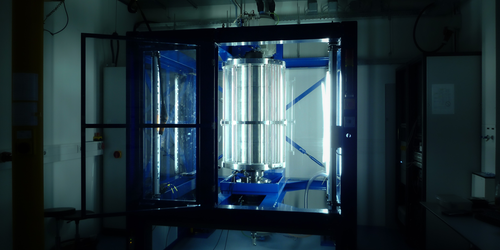The Many Personalities of Oil Mixed with Water
Oil and water don’t like to mix. But shake them hard enough, and they will form an emulsion with drops of one fluid suspended in the other. Compared to their individual constituent liquids, the flow properties of an emulsion are seemingly erratic, with the viscosity changing dramatically with the mixture’s composition, for example. Now, Dennis Bakhuis of the University of Twente, Netherlands, and colleagues have induced and characterized various phase changes in emulsions subjected to a turbulent flow [1]. The results could help industries to reduce the drag of oil-water emulsions transported through pipes, which would be relevant in sectors ranging from petrochemical to food.
To make the emulsion, the team confined mixtures containing different volume fractions of oil and water in the gap between two concentric cylinders and then set the cylinders spinning. They then used laser-induced fluorescence microscopy to monitor the fluid properties of the resulting emulsions. The team found a composition-dependent viscosity for the emulsion. For example, the viscosity decreased from 3 times higher to 2 times lower than that of water when they increased the oil content from 65% to 70%.
This dramatic change in viscosity occurred as the emulsion underwent a so-called catastrophic phase inversion, where the mixture switched—within a second—from oil droplets in water to water droplets in oil. A similarly large viscosity jump was observed for the opposite transition. The researchers plan to modify the setup to add solvents, such as alcohol, to the emulsion to study other fluid effects.
–Sophia Chen
Sophia Chen is a freelance science writer based in Columbus, Ohio.
References
- D. Bakhuis et al., “Catastrophic phase inversion in high-Reynolds-number turbulent Taylor-Couette flow,” Phys. Rev. Lett. 126, 064501 (2021).





